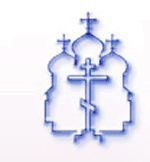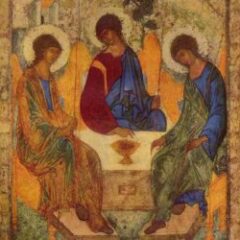Introduction

The first documentary evidences on the advent of Orthodoxy on the Estonian land date back to the XII century, but, undoubtedly, it became firmly established in 1030 together with the foundation of the city of Yuryev (Tartu) by the Russian Prince Yaroslav Wise.
The spread of Orthodoxy was not very intensive, however, it has always been a gospel bringing peace and brotherhood to the people; and only those who expressed their wish to accept the Holy Baptism joined it.
It is well known that already in the first half of the XII century in Novgorod and Pskov dioceses there were rules to be followed for notifying Estonians on the coming baptising.
It was prescribed by Nifont, the bishop of Novgorod (1130-1156), to notify Estonians 40 days before the baptising ceremony. The development of close and good-neighbourly relations between Estonians and Russians and the spread of Orthodoxy in the Baltic region were suspended by the invasion of German knights in the early XIII century. Northern War had a major effect on the life of the population of Baltic coast and pushed many reforms. Even before Peace Treaty in 1721 new Orthodox churches started emerging to meet the needs of local inhabitants as well as the military.
The first years after the Northern War
During the first years after the Northern War Orthodox churches were governed by Patriarchal Locum Tenens Metropolitan Stefan (Yavorsky), but in March 1725 the parishes of Livonian and Estonian provinces were handed over to the Pskov diocese headed by Archbishop Theofan (Prokopovich). In 1764 the parishes of Estonian province were handed over to Metropolitan of St Petersburg. With a view to ensuring direct control a new Clerical Board of Estonia was established. In 1817 Reval Vicariate under St Petersburg Diocese was established. Vicar bishops directly ran orthodox parishes in Northern Estonia, but they resided in the capital and visited the Vicariate very infrequently. In spite of all the difficulties, by 1866, the last year of Archbishop Platon’ rule in the diocese of Riga, the number of orthodox believers reached 180 000, the congregation increased by 40 000.
Type your query in the box below:
On the 10th of May 1920 the joint meeting of the Holy Synod and Supreme Clergy Council of the Russian Orthodox Church after discussing the situation in the Pskov diocese and Reval Vicariate, which were on the territory of Estonia, declared Estonian Orthodox Church an autonomous. In October 1920 Alexander Paulus, a priest of the Transfiguration church in Pärnu, was elected as Bishop of Reval. This election was approved by Patriarchy Tihon, and on 5 December 1920 the ceremony of bishop consecration was held in St Alexander Nevsky Cathedral.
In September 1922 the Council of the Estonian Apostolic Orthodox Church took the decision to address the Patriarch of Constantinople, Melety IV, with a petition to adopt the Estonian Orthodox Church under the jurisdiction of the Patriarchate of Constantinople and to declare it autocephalous. Later on the Metropolitan of Tallinn and all Estonia Alexander wrote that it was done under an intense pressure of the state. On 7 July 1923 in Constantinople Melety IV presented the Tomos on the adoption of Estonian Orthodox Church under the jurisdiction of the Patriarchate of Constantinople as a separate church autonomy “Estonian Orthodox Metropolia”.
